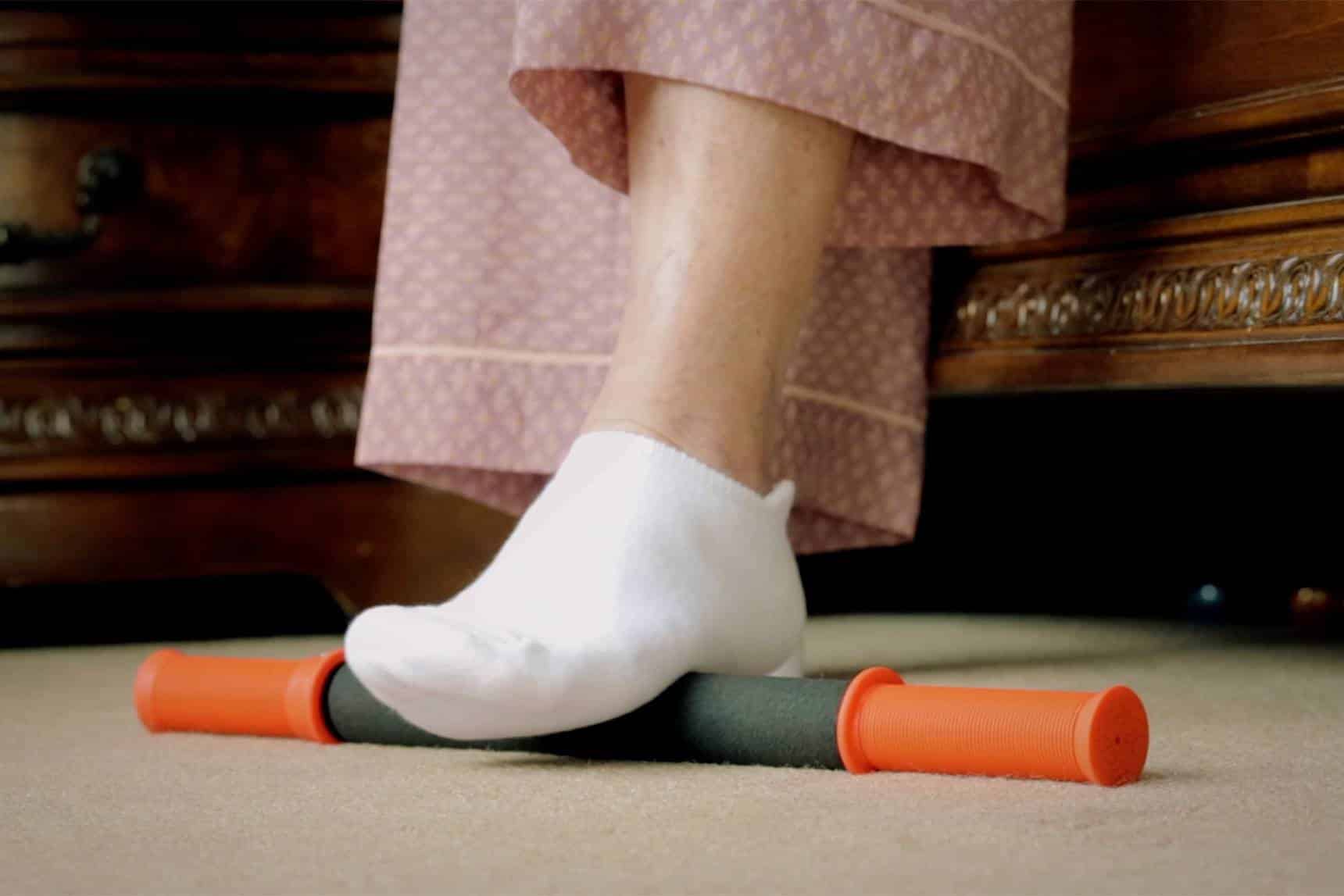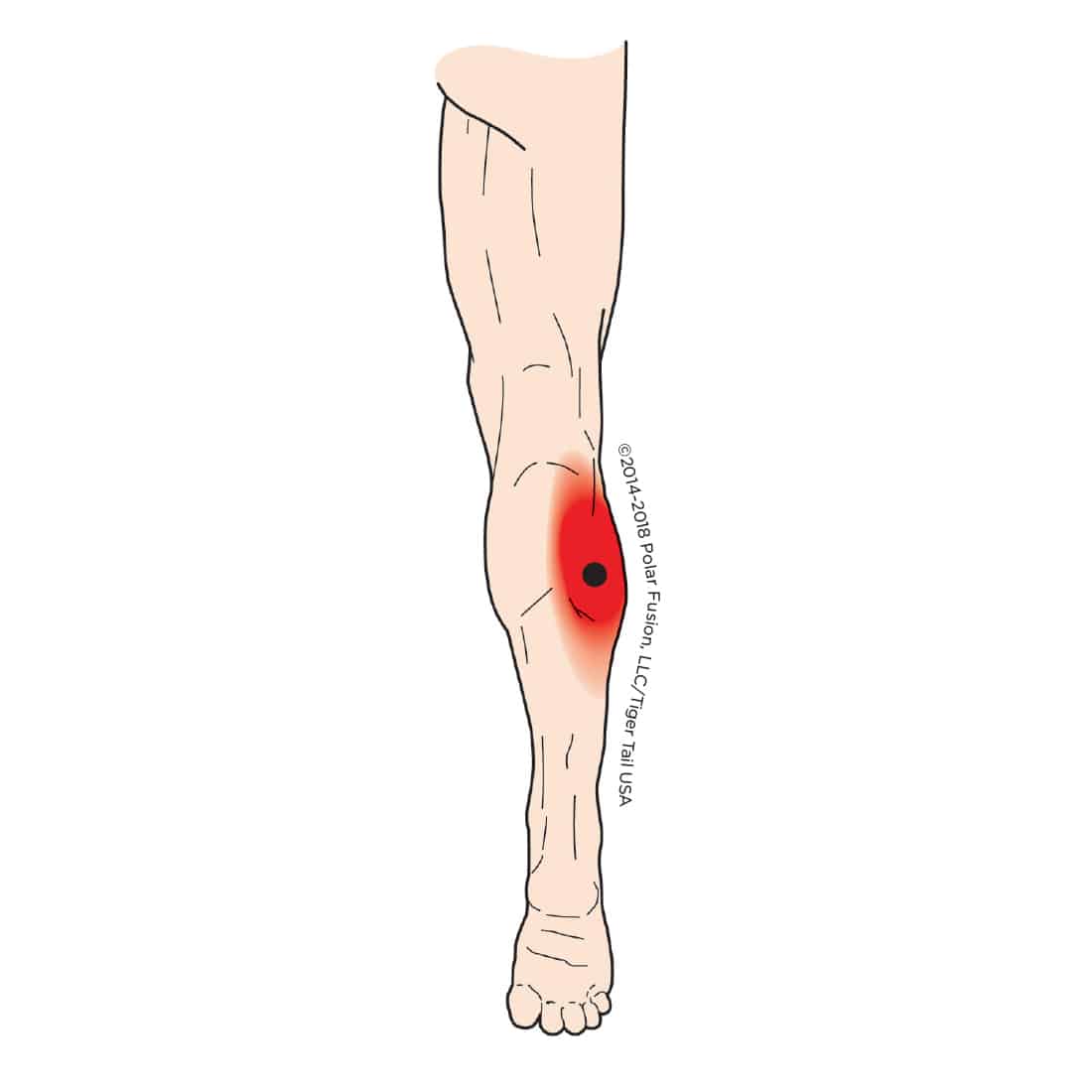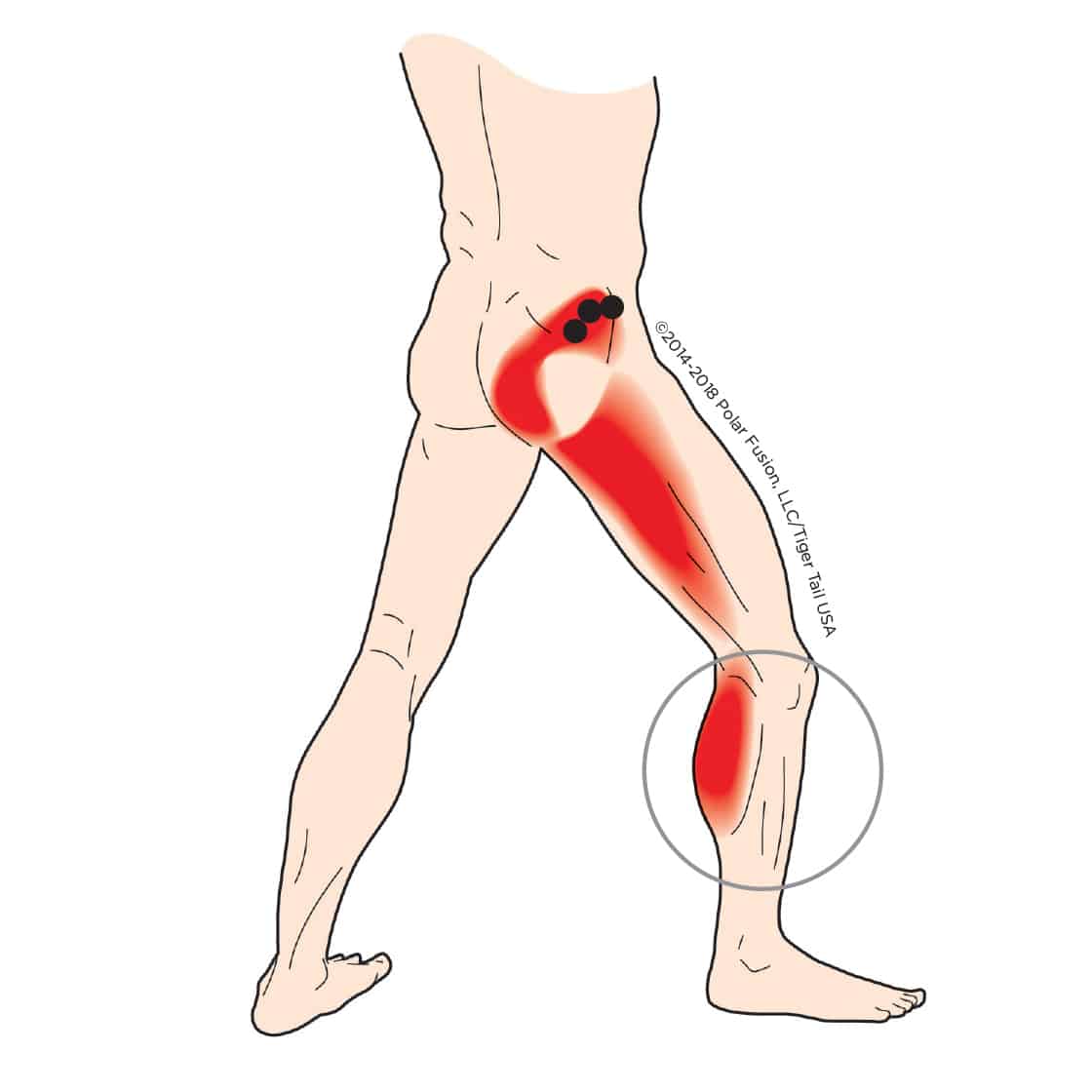
Muscle knots can cause pain in the calf. There are two muscles that make up the calf complex or calf muscles, the Gastrocnemius and the Soleus. These muscles form the Achilles tendon that attaches to the heel bone and are located on the back of the lower leg allowing you to go up on your tip toes. Wearing high heels or participating in activities where you are up and down on the ball of your foot can lead to the formation of muscle knots. Muscle knots in the calf muscle can cause heel pain or pain in the bottom of the foot. Those who suffer from plantar fasciitis often find relief by working on the muscle knots in the calf muscles.
Calf muscle knots, which consist of tight and contracted muscles, are indicated below by a black dot. The red area in the illustrations indicates “referred pain” – meaning, the pain you feel is often not in the location of your trigger point until you press on it. As an example, you may feel pain in the bottom of the foot, but the trigger point may actually be in the calf muscle. For a comprehensive look at more than 260 different pain map illustrations throughout the body, you may want to purchase the Tiger Tail Self-Help Guide to HAPPY MUSCLES.

Knots can form in the Gastrocnemius muscle causing calf pain

Knots in the Gluteus Minimus, one of three muscles that make up the buttocks, are often trigger points for calf pain.

Dr. Julie Zuleger has over 20 years of experience as a Licensed Massage Therapist, Certified Strength, and Conditioning Specialist (CSCS), Corrective Exercise Specialist, RYT-500 Yoga Instructor, and Human Movement Specialist. Julie promotes self-care using massage tools and stretching-based programs and teaches continuing education courses for yoga teachers, massage therapists, athletic trainers, strength and conditioning, fitness, and wellness professionals. Julie holds a PhD in Education and is the Director of Kinesiology and Education at Tiger Tail USA.
*Not applicable for shipping to Alaska and Hawaii
© 2024 Tiger Tail USA. All Rights Reserved.